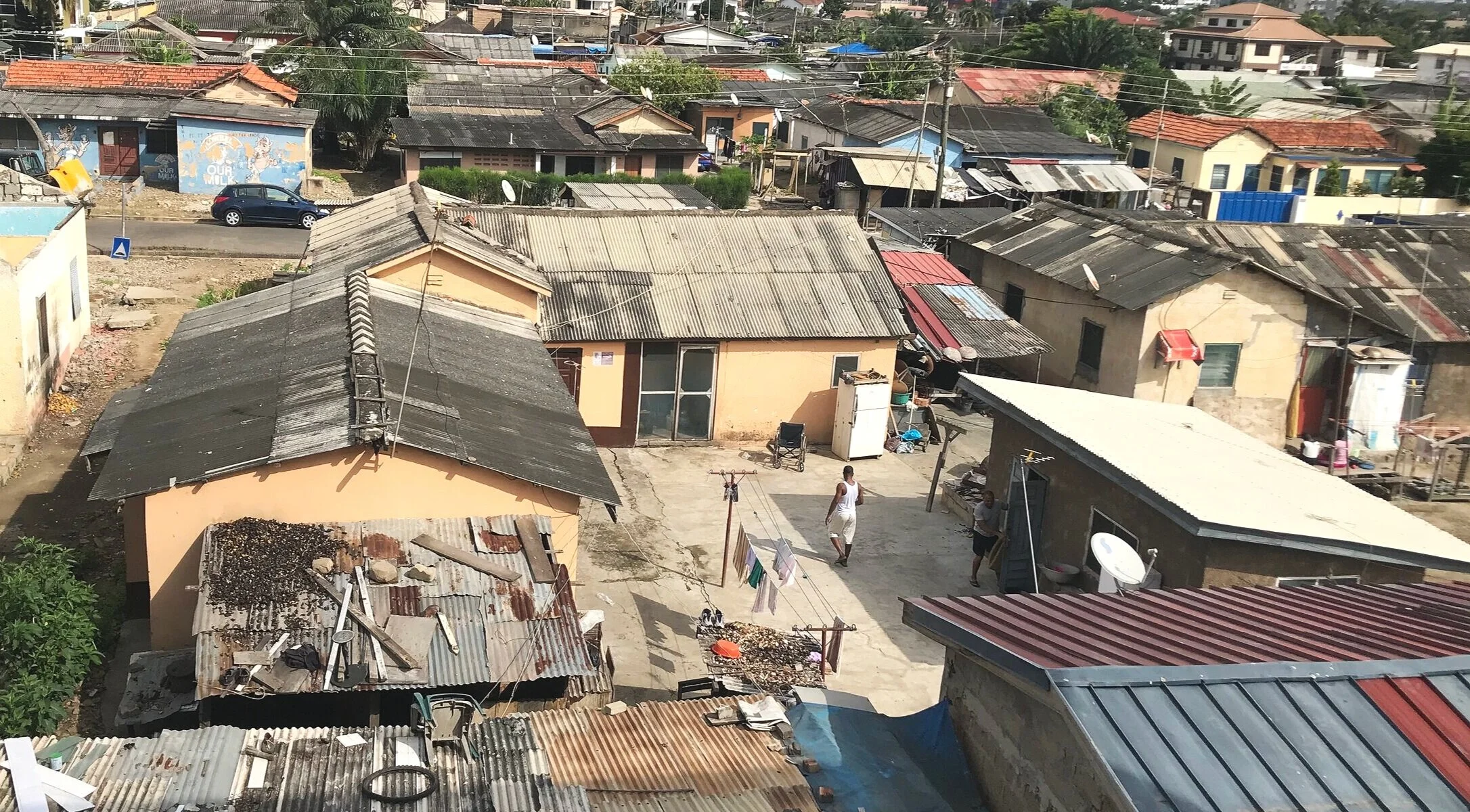The Ghana Compound House Typology
This article is based on ongoing research that began in 2010. The compound houses I have surveyed can be found across Ghana, including in Kumasi, Accra, Kpando and Kpugi. Parts of these findings have appeared in my 2012 Master of Architecture Dissertation (submitted to the Kwame Nkrumah University of Science and Technology) and my chapter in the Sub-Saharan Africa Architectural Guide published by DOM Publishers.
Cite as: Manful, Kuukuwa (2010) The Ghana Compound House Typology
The compound house typology (not to be confused with courtyard house) is one that is fast becoming quite obsolete in new constructions in Ghana. Although there are still several existing compound houses across the country, it is no longer necessary or desirable to build them in urban areas especially.
I find that it is necessary to distinguish between courtyard houses and compound houses as the two terms are sometimes used interchangeably. Although courtyard houses and compound houses both have a (usually central) compound or courtyard, the Ghana Compound house typology essentially consists of multiple households/families living within a single building complex, whereas courtyard houses typologies may have one family/household. A compound house is a kind of courtyard house, but not all courtyard houses are compound houses.
According to a UN Habitat report, “the traditional compound house is now hardly being built” as “compound living is unpopular, especially with the younger generation”(UN Habitat, 2011). This is due to a number of factors - such as socioeconomic and sociopolitical transformations that have resulted in changes to family structures and associated living arrangements. These are not as recent as commonly assumed, because the state (both colonial and newly independent) through its architects and other industry professionals has associated tradition, rurality and backwardness with traditional housing types.
Drew (1988), a pioneer modernist architect who practiced in Ghana, in her unpublished memoir writes about the undesirability of traditional housing typologies such as these. Long before her practice in Ghana, various colonisers and Christian missions had introduced new building typologies into the region that were associated with power and prestige and thus were being adopted and adapted by native residents (Manful, 2015). More forcefully, “building regulations prevented the use of local earth-based materials and planning regulations virtually outlawed compound houses” (UN Habitat, 2011).
A Compound House in Osu, Accra. Image Source: Kuukuwa Manful, 2018
The compound house typology in Ghana takes several different forms with different layouts and facilities, but the common characteristic is the presence of a usually central compound. The drawings below show different types of compound houses that I have surveyed. Compound houses can be found throughout the country and the in wider West African region, across different ethnic groups with some variations in the form of the building structures, materials, layouts and ornamentation, and ultimately there are enough similarities to classify it as a distinct architectural typology.
In a 2011 survey, 55% of households in urban areas across Ghana can be found in compound houses (UN Habitat, 2011). Historically compound houses have been well-suited both to the local climates, family structures and to social formations. Traditional style compound houses continue to exist and be used for these reasons, but more newer forms have been built or adapted to modern (particularly urban) needs. The social importance of compound houses have been well-documented. Danso-Wiredu & Poku, 2020 note that “family compound houses… represent the epicenter of the family and the point of unity” as among residential uses, they “serve as places for family meetings and also meeting points for family members living far and near”.
Compound House Types in Accra. The house on the left has relatively lower income inhabitants, compared to the house on the right.
Image Source: Kuukuwa Manful (2013)
A Single Household within a Compound House in Accra. Image Source: Kuukuwa Manful (2013)
Section Showing Spatial Zones in A Compound House in Kumasi. Image Source: Kuukuwa Manful (2011)
Some Common Compound House Layouts in Accra
Image Source: Kuukuwa Manful (2013)
BIBLIOGRAPHY
Jane Drew (1988) JD's Autobiography, F&D/29/1, The RIBA Collections, London
Kuukuwa Manful (2012) Urban Arena: Bantama, Kumasi, M.Arch Thesis, Kwame Nkrumah University of Science and Technology.
Kuukuwa Manful (2015) Building Identity: Ghanaian Architects and Tropical Modernism, MSc Thesis, University of Oxford
Esther Yeboah Danso-Wiredu & Adjoa Poku (2020) Family Compound Housing System Losing Its Value in Ghana: A Threat to Future Housing of the Poor, Housing Policy Debate, 30:6, 1016-1032, DOI: 10.1080/10511482.2020.1792529
UN Habitat (2011) Ghana Housing Profile
FURTHER READING:
For a study of different courtyard houses around the world, see Amos Rapoport (2007) The Nature of the Courtyard House: A Conceptual Analysis, Traditional Dwellings and Settlements Review , Vol. 18, No. 2 ( Spring 2007), pp. 57-72
For more studies of compound houses in Kumasi and Ashanti Region, see: SO Afram (2007) The Traditional Ashanti Compound House-A Forgotten Resource for Home Ownership of the Urban Poor, Conference on African Architecture Today, June 2007.




